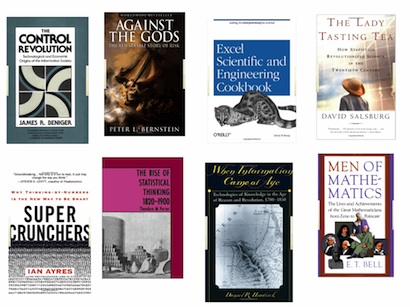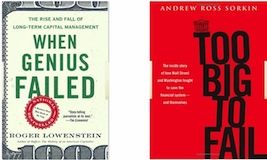Keywords
information architecture, web design, world-wide web, interaction design, user experience, information design
Cite As
Andrew Dillon & Don Turnbull (2006). Information Architecture. Encyclopedia of Library and Information Science, 2006 Edition. Taylor & Francis.
Introduction
Information architecture has become one of the latest areas of excitement within the library and information science (LIS) community, largely resulting from the recognition it garners from those outside of the field for the methods and practices of information design and management long seen as core to information science.
The term, information architecture (IA), was coined by Richard Wurman in 1975 to describe the need to transform data into meaningful information for people to use, a not entirely original idea, but cer- tainly a first-time conjunction of the terms into the now common IA label. Building on concepts in archi- tecture, information design, typography, and graphic design, Wurman’s vision of a new field lay dormant for the most part until the emergence of the World Wide Web in the 1990s, when interest in information organization and structures became widespread. The term came into vogue among the broad web design community as a result of the need to find a way of communicating shared interests in the underlying organization of digitally accessed information.
Excerpt
Research Issues in IA
Pure research in IA is rare, the field borrowing more from outside as needed than tackling research ques- tions directly. However, as the process of IA has become structured and recognized, dedicated research for IA is beginning to take form, driven largely by practitioners seeking answers to design questions.
The major theme in IA research is the study of navigation and how people find what they are looking for in an information space. From concerns with labeling and menu structures to the development of models of navigation behavior there are now significant research publications dealing with topics of direct relevance to IA.[10,11] True, most of this work is still borrowed from outside, but this is subject to change as more academic researchers become involved in the field.There is also significant work that extends examina- tions of navigation into areas such as the perception of information shape or the emergence of web genres and their exploitation for design.[7,12] This research aims to uncover the interaction between various structural forms of information space and the user, employing a socio-cognitive based analytical approach to explain- ing and predicting use.
Another central theme for IA research is search behavior and the underlying design of efficient search mechanisms. Again, this research not only draws on the history of such work for information retrieval but also contains new contributions dealing with faceted metadata and image databases.[13–15]
Indeed, it is difficult to bound work exclusively as the province of IA because concerns with organization of information and user search and navigation of information spaces have such a long history. It is likely that for the foreseeable future, IA will remain a net borrower of intellectual research from other disciplines until such time as dedicated venues for IA research publications emerge. That said, the need to understand how best to design and implement IAs will remain an important driver of research work.
References in this publication
- Rosenfield, L.; Peter, M. Information Architec- ture for the World Wide Web: Designing Large- Scale Web Sites; O’Reilly & Associates, Inc.: Sebastopol, CA, 2002.
- Wurman, R.S., Bradford, P., Eds.; Information Architects; Graphis Press: Zurich, Switzerland, 1996.
- Dillon, A. Information architecture in JASIST? J. Am. Soc. Inf. Sci. Technol. 2002, 53 (10), 821– 823.
- Weibel, S.L. The Dublin Core: a simple content description model for electronic resources. Bull. Am. Soc. Inf. Sci. Technol. 1997, 24 (1).
- Beckett, D.; McBride, B., Eds.; RDF=XML Syntax Specification (Revised): W3C Recommendation 10 February 2004. World Wide Web Consortium, Cambridge, MA., http://www.w3. org/TR=2004/REC-rdf-syntax-grammar-20040210/ (accessed Mar 29 2005).
- Instone, K. Fun with faceted browsing. American Society of Information Science and Technology Information Architecture Summit, Austin, TX, Feb 28, 2004.
- Dillon, A. Spatial semantics: how users derive shape from information spaces. J. Am. Soc. Inf. Sci. 2000, 51 (6), 521–528.
- Nielsen, J. Designing Web Usability; New Riders: Indianapolis, 2000.
- Helander, M.; Landauer, T.; Prabhu, P.V. Hand- book of Human Computer Interaction; North- Holland: Amsterdam, 1997.
- Jacko, J.A.; Slavendy, G. Hierarchical menu design: breadth, depth and task complexity. Percept. Motor Skills 1996, 82, 1187–1201.
- Pirolli, P.L.; Fu, W. SNIF-ACT: a model of infor- mation foraging on the World Wide Web. 9th International Conference on User Modeling, Johnstown, PA, Jun 22–26, 2003.
- Kwasnik, B.; Crowston, K. A framework for creating a faceted classification for genres. Hawaii International Conference on Systems Science (HICSS 04), Los Alamitos, CA, Jan 2004.
- Bates, M.J. The design of browsing and berry- picking techniques for the on-line search interface. Online Rev. 1989, 13, 407–424.
- Yee, K.; Swearingen, K.; Li, K.; Hearst, M. Faceted metadata for image search and browsing. Proceedings of CHI’03, Annual Conference of the ACM SIGCHI, New York, Apr 2003; ACM Press: New York, 401–408.
- Wildemuth, B.; Marchionini, G.; Yang, M.; Geisler, G.; Wilkens, T.; Hughes, A.; Gruss, R. How fast is too fast? Evaluating fast forward surrogates for digital video. ACM/IEEE Joint Conference on Digital Libraries, Los Alamitos, CA, Jun 2003; 221–230. I
- Berners-Lee, T. The World-Wide Web. Commun. ACM 1994, 37 (8), 76–82.
- Lyman, P.; Kahle, B. Archiving digital cultural artifacts: organizing an agenda for action. D- Lib Mag. 1998, 4 (7); http://www.dlib.org=dlib/july98/07lyman.html (Apr 5, 2005).
- Berners-Lee, T.; Hendler, J.; Lassila, O. The Semantic Web. Sci. Am. 2001, 284 (5), 34–43.

